Growing greenhouse roses is one of the most rewarding experiences for any gardener.
When you see their vibrant blooms shining in the sunlight, you know you’ve done something right.
One simple upgrade that pays off fast is putting in a rainwater harvesting system. Using rainwater, rather than tap water, can seriously step up the health and longevity of your greenhouse roses.
Let’s check out how you can set up rainwater harvesting, why it matters, and how careful water management gives your roses a next-level cool boost.
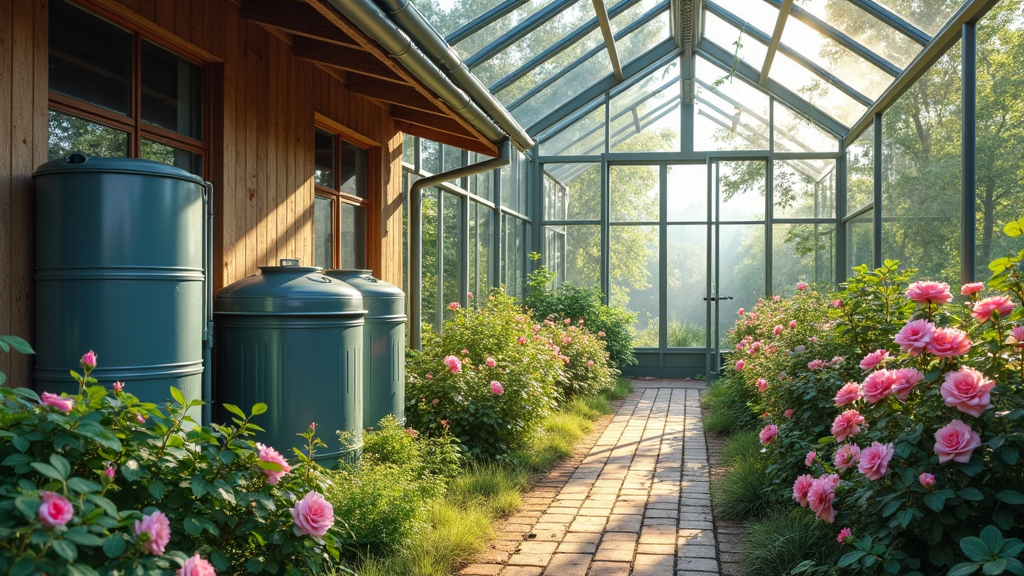
Why Rainwater Harvesting Matters for Greenhouse Roses
Switching from tap water to rainwater for your roses seems simple, but there’s science to back up why it works.
Rainwater is naturally soft, neutral, and doesn’t bring in all the extra chemicals you see in municipal water.
Tap water can sometimes mess with your soil or your rose’s health because of all those additives.
Recommended Product:
Rain Wizard 50-Gallon Rain Barrel – Great for beginners, food-safe, and durable.
What Is Rainwater Harvesting?
Rainwater harvesting means collecting rain that falls on your greenhouse roof—or even other buildings nearby—and saving it for watering your plants.
Most people use gutters and barrels, but you can also build more involved setups with tanks and pumps if you have a bigger greenhouse or want to automate watering.
Helpful Add-On: Oatey Mystic Rainwater Collection System – Easy-to-install downspout diverter.
Why Use Rainwater for Roses?
Roses love stability and pure water. Chlorine, fluorine, and salts in city water can throw off your soil’s balance and even slow flower growth or leave brown edges on your leaves.
Rainwater skips all those problems, so your roses soak up what they need and nothing else gets in their way.
Benefits of Harvesting Rainwater for Greenhouse Roses
Many greenhouse growers and home gardeners these days are switching to rainwater harvesting for a list of great reasons.
Sustainability in Agriculture
Catching and using rainwater gives a boost to the environment. It lowers the strain on local water supplies and lets you cut your greenhouse’s environmental footprint.
You’re using water that would otherwise just turn into storm runoff, putting it straight to work for your roses.
Saving on Water Costs
Tap water can get pricey in a hurry, especially if you’re growing lots of roses. Even a small greenhouse setup can see savings when using rainwater.
The initial investment in a few rain barrels or a tank will practically pay for itself after a few seasons of lower water bills.
Capture More Water:
IBC Water Tank – Ideal for large greenhouses
Improved Rose Health
Roses watered with rainwater tend to show richer colors and have fewer problems with leaf burn or weak roots.
Because rainwater is typically just a little acidic, it matches your roses’ preferred conditions. Consistent use leads to stronger roots, more colorful blooms, and long-lasting plants—even under greenhouse conditions.
Filter Tip:
First Flush Diverter Kit – Keeps the dirtiest roof water out of your barrel.
Reduced Environmental Impact
Using collected rainwater also helps prevent erosion and cuts down on runoff that might carry away fertilizers or pesticides.
This means a cleaner garden and less impact on local waterways and ecosystems.
Step-by-Step: Setting Up a Rainwater Harvesting System for Greenhouse Roses
Building a rainwater setup is easier than you might think. Here’s a guide on how to sketch out a system for any greenhouse, whether you’re a backyard hobbyist or running a big operation.
Choosing Collection Locations
Start by scoping out your greenhouse roof (or any other roofs nearby). The bigger and cleaner, the better for catching rain.
Make sure your gutters are sturdy and all your downspouts are leading where you want the water to go.
Main System Components
- Gutters and Downspouts: These pull water off the greenhouse roof. Clean them regularly to keep out clogs from leaves or debris—otherwise your water might get dirty or blocked up.
- Rain Barrels or Tanks: Storage is key. Pick food grade plastic barrels or lined metal tanks for extra safety. Keep them tightly closed or covered with a fine mesh to stop algae and bugs.
- Filtration System: Filters or simple mesh screens keep twigs, dust, and larger debris out of your water supply. Consider adding a first-flush diverter to discard the initial wash from your roof, which is usually the dirtiest.
- Pump and Distribution: For larger setups, an electric or solar-powered pump makes quick work of watering, either with hoses or installed drip systems. Gravity can also move water if your storage tank is set up higher than your plants. Gutter Maintenance Tool: Frost King Gutter Guard Mesh – Keep leaves and debris out of your system.
Gutters and Downspouts
Choose gutters made from long lasting PVC or aluminum. This way, there’s no risk of introducing extra chemicals into your harvested rainwater.
Check that water runs easily into your barrels without any leaks or overflows. If the water’s not flowing freely, adjust the slope or do a quick clean.
Starter Kit Option:
Rain Wizard 50-Gallon Barrel
Rainwater Storage Options
Small setups work well with regular rain barrels—make sure you have a combined capacity that covers a stretch with little rainfall.
If your greenhouse or rose beds are big, look for larger tanks (even 500 gallons or more) to get you through drier weather without worry.
Filtration Features
Mesh screens on your downspouts do a good job keeping leaves and bugs out. A first-flush diverter only lets in the cleaner rainwater—tossing out the part that might carry extra dust and dirt from your roof.
You could add an extra charcoal or sand filter if you’re looking for even cleaner water for your roses.
Barrel Cleaner:
Algaecide – Prevents algae naturally.
Pump and Water Distribution
An electric or solar powered pump can turn labor intensive hand watering into an easy routine, allowing you to run drip lines or misters for bigger rose collections.
For smaller greenhouses or hand watering, gravity-fed hoses are simple and dependable.
Pump and Distribution
Use gravity-fed hoses or automated pumps for large systems.
Top Pump Picks:
Solariver Solar Water Pump
Managing and Using Collected Rainwater in the Greenhouse
Watering System Compatibility
Your stored rainwater can be used for all popular watering methods—whether you prefer watering by hand, running drip irrigation lines, using soaker hoses, or even overhead sprinklers.
Drip lines are a favorite since they water right at the soil line, reducing fungal problems and conserving water.
Rainwater works well with drip lines, soaker hoses, or hand watering.
Drip Kit for Roses:
Raindrip Automatic Watering Kit
Water Quality Management
Keep your barrels or tanks in top shape by rinsing them out every few months. If algae appear, a little vinegar wash will take care of it.
Maintenance of filters and diverters is key—clear out any debris as soon as you spot it.
Stored water should never be left open to sunlight or air for too long; opaque containers and tight lids keep things fresher.
Improving Water Usage Efficiency
Water in the morning or evening to avoid losing too much to evaporation. Use soil probes or do the finger test to see if your soil is moist.
Only water when the plants need it—this way, you save water and make your rainwater stores last longer.
Water in the morning or evening. Use tools to track soil moisture.
Soil Tester Must-Have:
XLUX Soil Moisture Meter
Figuring Out How Much Water Your Roses Need
Roses’ Watering Requirements
Greenhouse roses usually need about 1 to 1.5 inches of water each week. This depends on the heat, humidity, and growth stage of your roses.
Young or newly transplanted roses will want a little more. Stay regular with your watering schedule, but don’t soak the soil—aim for moisture, not mud.
Estimating Your Rainwater Harvest
To guess how much rain you’ll catch, multiply your greenhouse roof area by your area’s average rainfall.
Example: 1,000 square feet of roof will fill almost 600 gallons for every inch of rain. Look at the forecasts and have some extra storage if you live somewhere with spotty rain during the growing season.
Rainwater Harvesting and Your Roses’ Health
Avoiding Water Stress
Regularly giving your roses rainwater helps you avoid droopy leaves and brown spots that pop up when watering is inconsistent or water quality isn’t the best.
Better moisture at the roots translates to sturdier stems and lush flowers.
Dealing with Pests and Disease
Rainwater leaves behind less salty residue. This makes it less likely for fungal diseases to get started, and with drip systems, you’ll keep the foliage dry.
All this means less powdery mildew, fewer bugs, and healthier plants overall.
Root Health and Soil Structure
Rainwater keeps your soil chemistry balanced, helping beneficial microbes thrive.
Well-structured, microbe-rich soil lets rose roots grow deep and pull up nutrients efficiently. Thicker canes, green leaves, and more buds are the payback.
Common Challenges with Rainwater Harvesting for Greenhouse Roses
- Initial Costs: Barrels, pumps, and filters aren’t free, but the money saved on water bills and healthier roses is well worth the up front price for most growers.
- Dry Spells: Sometimes the rain just doesn’t come. Large tanks or backup water sources will get you through the rough patches.
- Maintenance Tasks: You have to stay on top of cleaning—checking gutters, washing out filters, and giving your barrels a onceover each season will keep everything flowing the way it should.
The Environmental Payoff of Rainwater Harvesting for Roses
Setting up a rainwater system isn’t just a money saver. It dramatically reduces water waste and keeps your greenhouse operation cleaner.
Instead of pulling water out of city pipes or wells, you’re making the most of what nature gives you. Less runoff also means fewer chemicals make it out into the environment.
Supporting Water Conservation in Greenhouse Operation
Every gallon of rain you collect makes your greenhouse rose-growing more sustainable and resilient.
As more growers get into rainwater systems, the entire community benefits—a little collective improvement goes a long way for water conservation and the planet.
What’s Next: The Future of Rainwater Harvesting for Greenhouse Roses
New Technologies on the Horizon
Tech is making rainwater harvesting more efficient.
Solar pumps, app-connected moisture sensors, and automatic timers allow you to manage your watering from anywhere, and use just the right amount for your roses.
Thinking of upgrading?
There’s never been a better time to get into smart watering tech.
Smart Garden Upgrades:
Rachio 3 Smart Irrigation Controller
Industry Trends
As climate patterns shift, greenhouses across the world are shifting toward smarter, more efficient water use.
More incentives and resources for growers show how popular rainwater systems are becoming.
For commercial and backyard growers alike, water conservation is now part of the conversation and the new normal.
Bottom Line: Rainwater Harvesting Sets Up Greener Roses and Gardens
Switching to rainwater harvesting doesn’t just help your roses bloom bigger and last longer—it also cuts costs and sets your greenhouse up for the long term.
Cleaner water, more responsible resource use, and fewer chemicals combine to make your entire operation something to be proud of.
If you’re considering getting started, plan your setup carefully and maintain your equipment.
Over time, you’ll be rewarded by lush, bright roses and the satisfaction of knowing you’re doing good for your plants and the planet.
With just a bit of care and commitment, rainwater harvesting helps you grow beautiful roses and take care of the world around you.
Ready to Get Started?
Here’s everything you need to kick off your rainwater system:
Happy gardening!!!!!!!
This website contains Amazon affiliate links. If you purchase after clicking one of these links, I may earn a small commission at no additional cost to you.

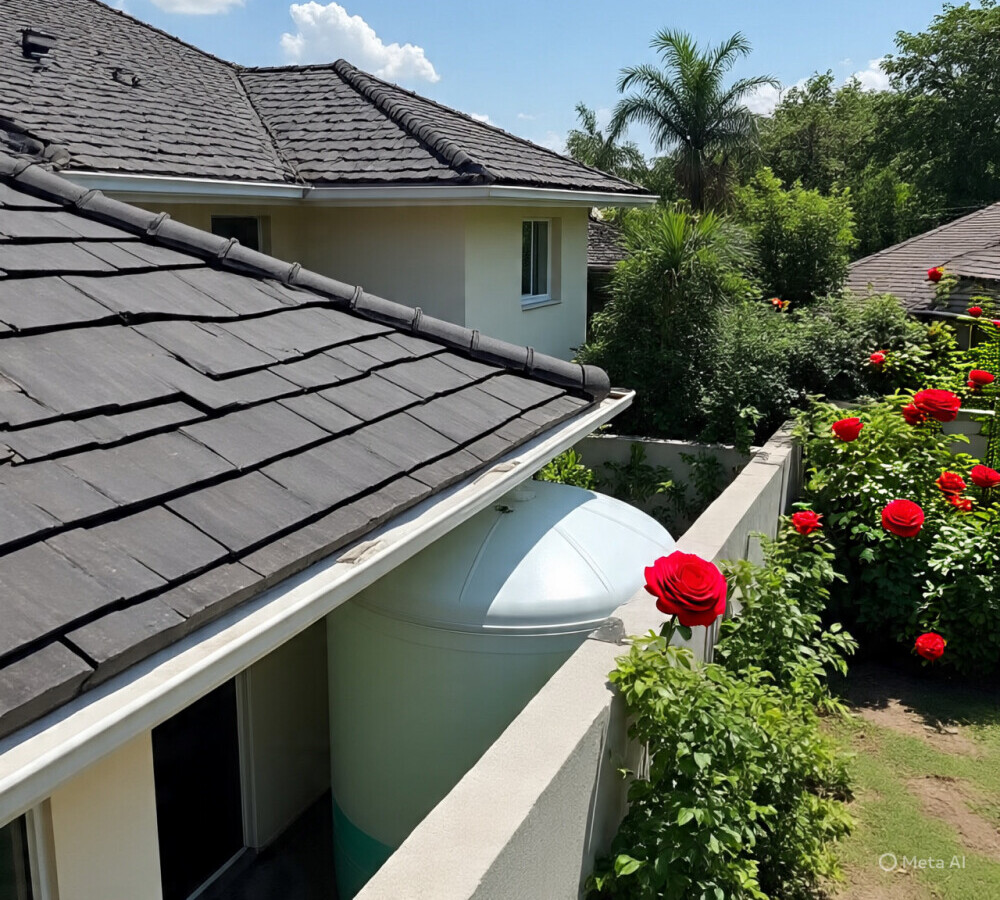

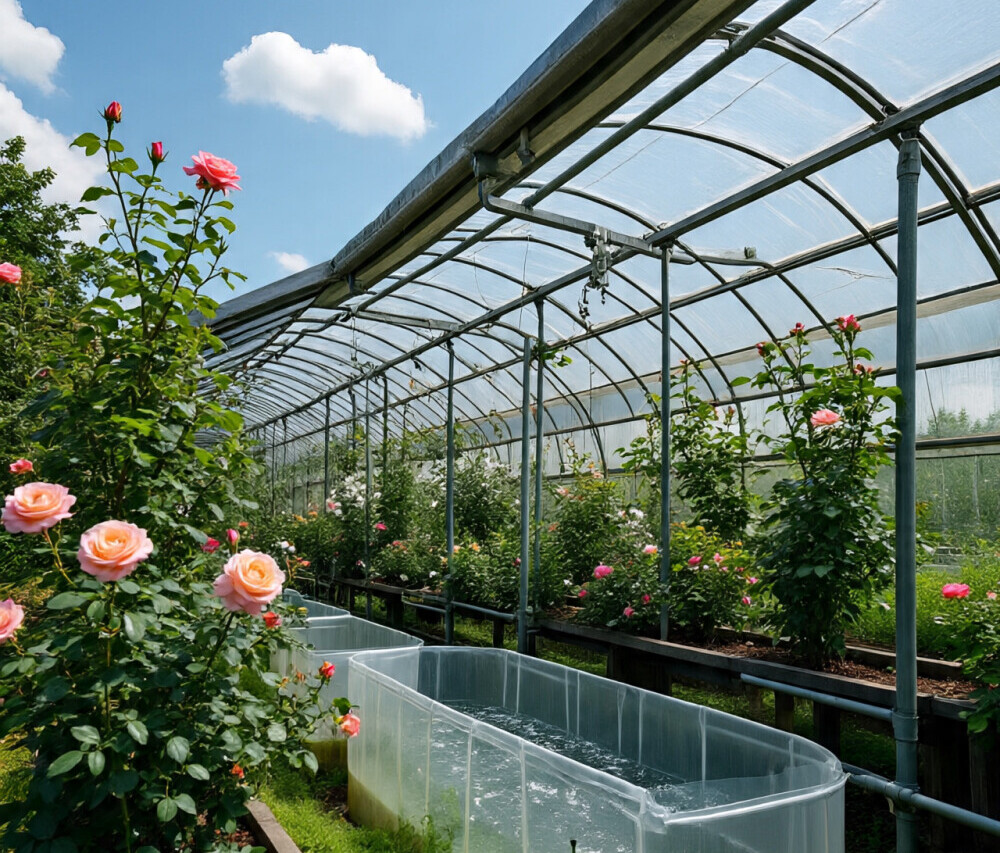
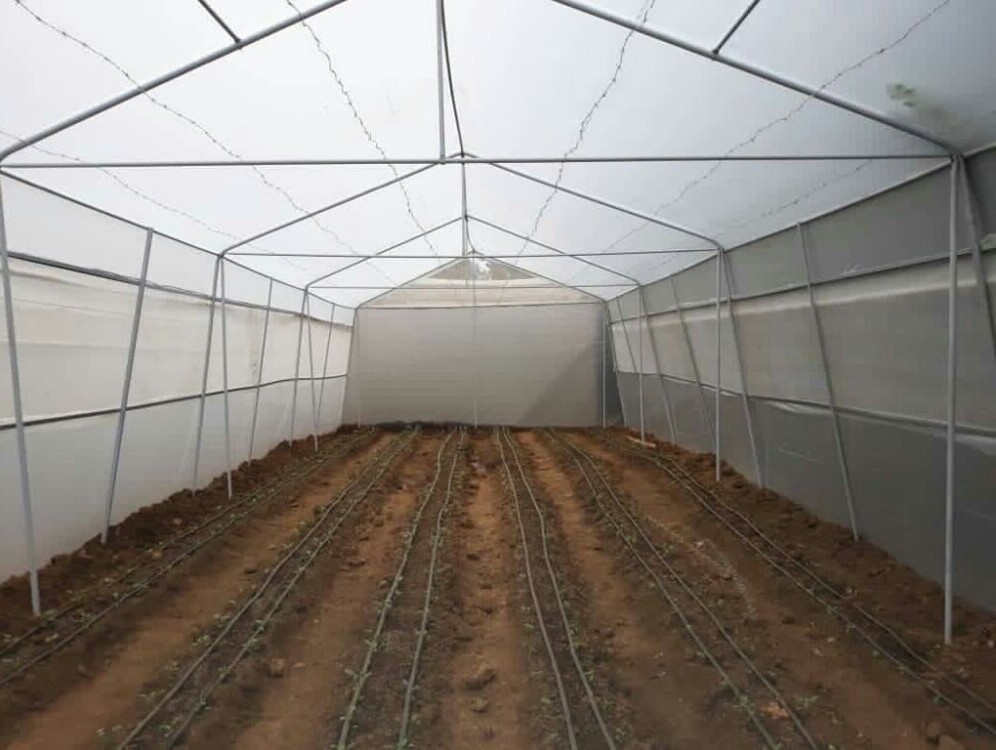
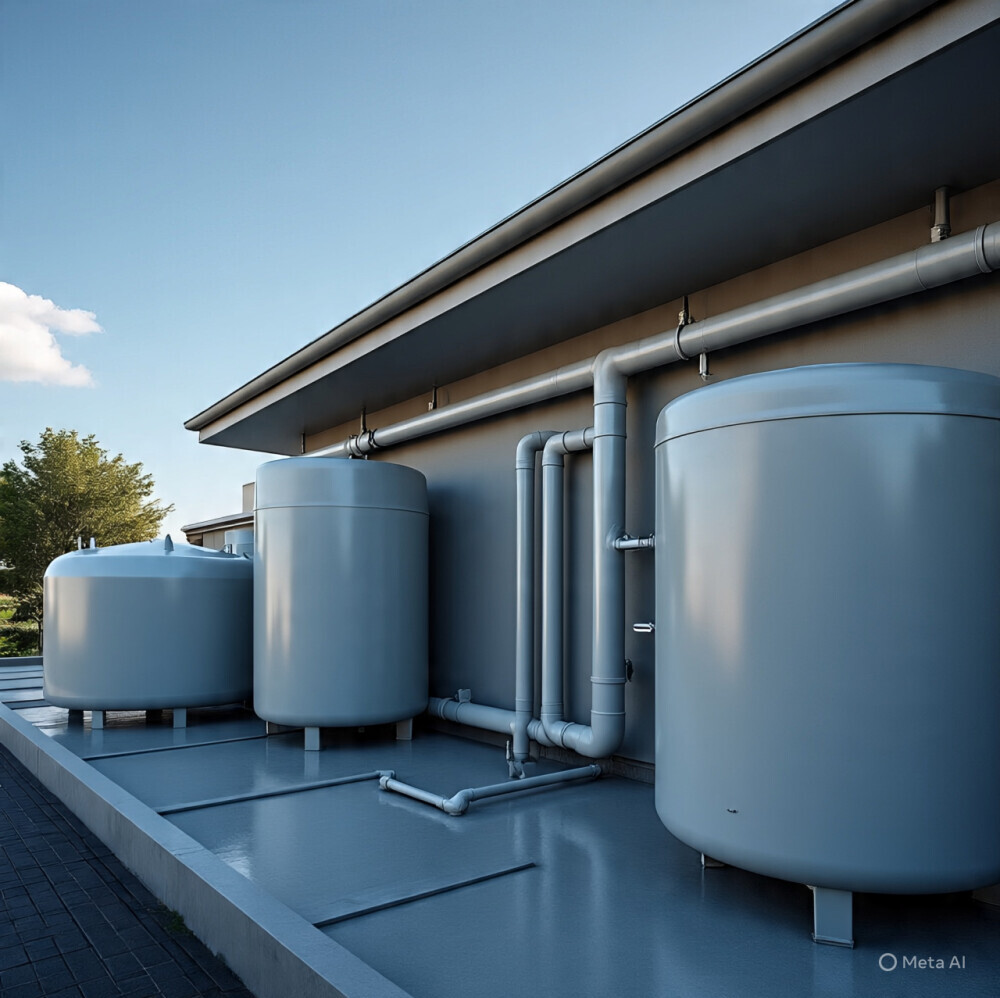
This guide is packed with practical, beginner-friendly advice — thank you! It’s the rainy season where we live, and my mom, who tends to her backyard garden like it’s her second child, would absolutely benefit from a setup like this.
I especially appreciated the breakdown on why rainwater is better for roses — I had no idea that tap water additives could actually harm their health or affect bloom quality! The fact that rainwater is naturally soft and chemical-free makes so much sense, especially when you want your plants to thrive, not just survive.
Also, the product recommendations are super helpful — that Rain Wizard 50-Gallon Barrel sounds like a perfect starter for her space, and I love that there’s even a tip for keeping out that dirty “first flush” of rain. This post made rainwater harvesting feel less intimidating and more like a fun upgrade we can try together. Definitely saving and sharing this one!
Hi Alice,
Thank you so much for your thoughtful comment!
I’m so glad to hear that you found the guide practical and beginner-friendly—it’s wonderful that your mom tends to her garden with such care, and I’m sure she’ll love the rainwater harvesting setup.
You’re absolutely right about the tap water additives—many of them, like chlorine and fluoride, can indeed affect the health of roses and their ability to bloom properly.
It’s great to hear that the benefits of rainwater made sense and that the chemical-free, soft water solution clicked for you!
I’m happy the product recommendations were helpful too. The Rain Wizard 50-Gallon Barrel is definitely a great starting point, especially for smaller spaces.
And yes, that “first flush” tip is key to ensuring the rainwater is as clean as possible before it hits the plants.
It’s fantastic that this post made rainwater harvesting feel more approachable, and I’m excited that you’re planning to try it with your mom! I’m sure it’ll be a fun and rewarding project.
Thanks for saving and sharing the post—it means a lot. If you ever have any more questions or need more tips, feel free to reach out.
Best,
Raymond.